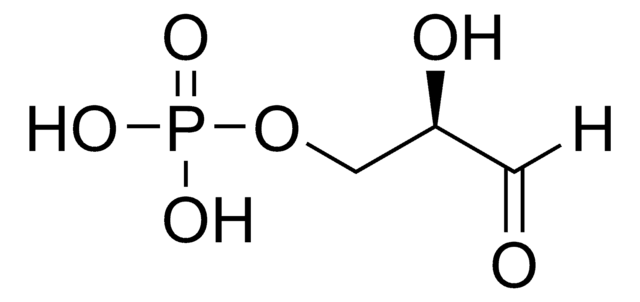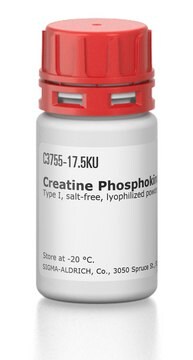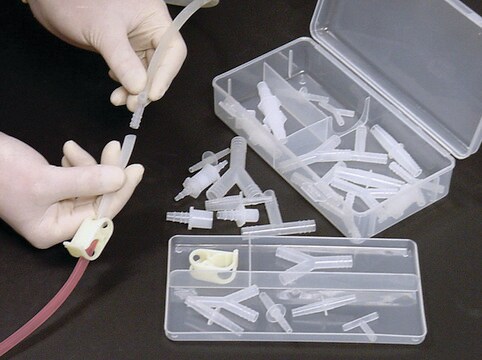G6019
Glyceraldehyde-3-phosphate Dehydrogenase from human erythrocytes
lyophilized powder, 50-150 units/mg protein
Sinonimo/i:
D-Glyceraldehyde 3-phosphate:NAD+ oxidoreductase (phosphorylating), GAPDH
About This Item
Prodotti consigliati
Stato
lyophilized powder
Livello qualitativo
Attività specifica
50-150 units/mg protein
Composizione
Protein, 40-70% biuret
N° accesso UniProt
Attività estranea
3-Phosphoglyceric phosphokinase ≤2%
Temperatura di conservazione
−20°C
Informazioni sul gene
human ... GAPDH(2597)
Azioni biochim/fisiol
Definizione di unità
Stato fisico
Inibitore
Codice della classe di stoccaggio
11 - Combustible Solids
Classe di pericolosità dell'acqua (WGK)
WGK 3
Punto d’infiammabilità (°F)
Not applicable
Punto d’infiammabilità (°C)
Not applicable
Scegli una delle versioni più recenti:
Possiedi già questo prodotto?
I documenti relativi ai prodotti acquistati recentemente sono disponibili nell’Archivio dei documenti.
I clienti hanno visto anche
Articoli
We presents an article about the Warburg effect, and how it is the enhanced conversion of glucose to lactate observed in tumor cells, even in the presence of normal levels of oxygen. Otto Heinrich Warburg demonstrated in 1924 that cancer cells show an increased dependence on glycolysis to meet their energy needs, regardless of whether they were well-oxygenated or not.
Il team dei nostri ricercatori vanta grande esperienza in tutte le aree della ricerca quali Life Science, scienza dei materiali, sintesi chimica, cromatografia, discipline analitiche, ecc..
Contatta l'Assistenza Tecnica.










